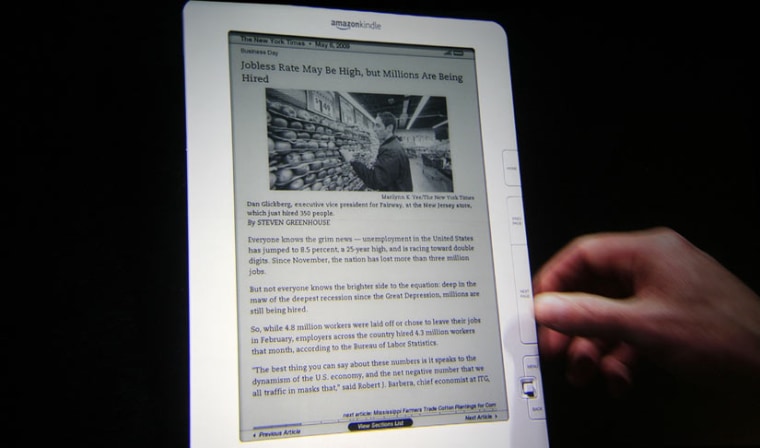A new spray-on polymer could lead to the development of e-readers that display not in black and white, but in every color of the rainbow. When combined with solar technology, the new treatment could power portable electronics and even homes and businesses.
Developed by scientists at the University of Florida, the new spray-on polymers can reflect or transmit any color of light. With a simple spray, they can be applied to hard glass or flexible plastic.
"When you look at simple LCD displays or a Kindle with its electrophoretic display, you are looking at something that changes from white and non-colored to black," said John Reynolds, a scientist at the University of Florida who led a team that developed the clear-to-black polymers.
"That's what this newest paper is about, but we've also developed polymer coatings for all the other colors of the spectrum," he added.
Most e-readers, like Amazon's Kindle or the Barnes and Noble Nook, don't produce their own light. That is why, like a paper book, you can't read them in the dark. These devices instead reflect light from the sun and other light sources.
These screens have been around for a while now and work well for small, portable devices like e-readers.
For larger areas, like roadside billboards or glass windows, where flexible materials like thin plastic might be used, the existing technology is not practical. What Reynolds and his colleagues, including Andrew Rinzler, also at the University of Florida and the company nRadiance, wanted to develop was a spray-on technique that would allow much larger displays.
The clear-to-black polymer is only the latest in a series of color-changing polymers developed by the Reynolds group.
Over the last several years the Florida scientists, in conjunction with BASF, have developed a range of color-changing polymers. The technology could lead to full-color e-readers, color-changing billboards and signs, or any number of other applications.
A color-changing polymer-based device available to consumers is still a long way off, said Reynolds. However, such a gadget should be competitive with existing technology in both price and performance.
The new research is "a nice achievement," according to Fred Wudl, a scientist at the University of California, Santa Barbara.
"The advantage of conjugated polymers is the tunability of color and voltage as well as the usual polymer properties such as flexible film-formation," said Wudl.
Such devices could eventually power themselves, said Reynolds.
The Florida scientists along with another company, Sestar, are also working to develop "aesthetically pleasing" solar cells based on the same polymer technology used to create colored screens.
That research is still preliminary, said Reynolds, but eventually those solar cells could provide power to e-readers, cell phones and other devices left in sunlight. Applied to windows, the solar cells could help supply energy to a home or business.
